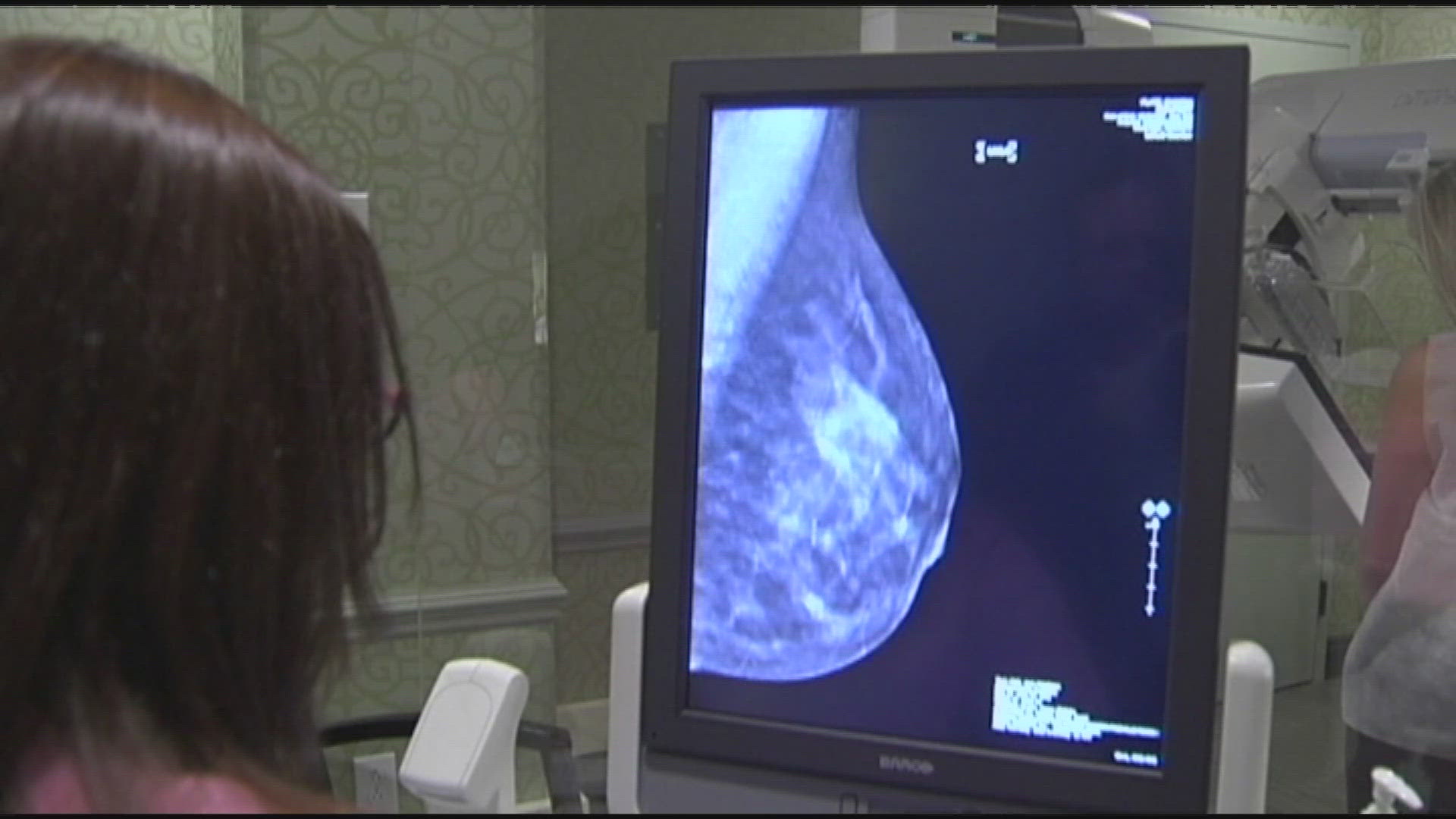ST. LOUIS — It’s National Breast Cancer Awareness Month, and 5 on Your Side is looking into the procedures performed after a diagnosis.
Every year, more than 100,000 women across the country get mastectomies. There are different types of mastectomies, which are considered "risk-reducing surgeries" aimed at lowering the risk of cancer reappearing.
- Bilateral - The removal of both breasts.
- Unilateral - The removal of one breast.
- Lumpectomy - Removing a cancerous lump and preserving the breast.
It’s more important than ever to know treatment methods. Over recent years, more women have been diagnosed at earlier ages, but their cancers are at more severe stages.
Our Sydney Stallworth met with Mercy Hospital's Chief of Plastic Surgery Dr. Michael Curtis, who said he sees this concerning trend every day. He said, “It used to be more in the 50 to 60 range of women. Now, we’re seeing more women in their 30s to 40s."
In many ways, the roadmap for care hasn’t caught up with this concerning trend.
Curtis said, “Unfortunately, the recommended mammogram age is still at 40 for most women, so the younger patients are typically presenting when they feel a mass, as opposed to the older patients who can feel a mass, but normally, it presents in a mammogram.”
Younger diagnoses at higher stages of cancer mean patients have tough decisions to make about their care.
The Breast Cancer Research Foundation reports that younger women are more likely to have cancer reappear than older women, even after five and 10 years of therapy.
Curtis said he's seeing more younger women opting to remove one or both breasts entirely with bilateral mastectomies.
“We see both," he said. "There’s a couple of things that pertain to that choice, some is genetic testing. If somebody has a genetic mutation that predisposes them to breast cancer, sometimes it’s the better option to choose a bilateral mastectomy to lessen their risk when you know the risk is there. We do often see more women choose bilateral mastectomy over unilateral.”
The American Society of Plastic Surgeons reported in 2022 that about half of cancer patients who've had a mastectomy choose to have breast reconstruction surgery.
Curtis is a member of a care team for Mercy Hospital patients in the event they decide to move forward with breast reconstruction surgery after a lumpectomy or mastectomy.
We asked Dr. Curtis how many of his patients decided to reconstruct their breasts after removal.
He said, “I would say, probably about 80 to 90%. We have options both for implants and the tissue-based options.”
Curtis said medical improvements over the years mean better options for patients.
“The implants we have now are a lot different than the implants of the '80s and '90s," Curtis said. "They’re solid gel silicon implants. The leakage rate is far less than it used to be. It’s a safe option for reconstruction. But, if they have some areas of tissue that can be used for reconstruction, the tissue procedures like deep flap or medial thigh surgery, they have a much longer longevity than the silicone implants.”
This information is not just relevant to women. Curtis said he performs breast reconstruction surgery on men who have had breast cancer.
He said, “Some of those men present with tumors that are much larger than women who receive regular mammograms and surveillance. Sometimes the reconstructive surgery with those men is to provide wound closure or to provide a normal contour to the chest and not to provide a breast.”
Most men received tissue-based reconstruction surgery rather than a silicone or saline implant, Curtis said.
The Susan G. Komen Foundation reports that men are often diagnosed at a later stage of breast cancer than women. One reason could be that men may be less likely than women to report signs and symptoms. That could lead to later cancer detection.
The CDC reports that about 1 out of every 100 breast cancers diagnosed in the U.S. is found in a man.

